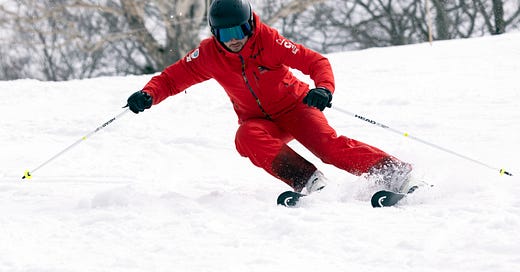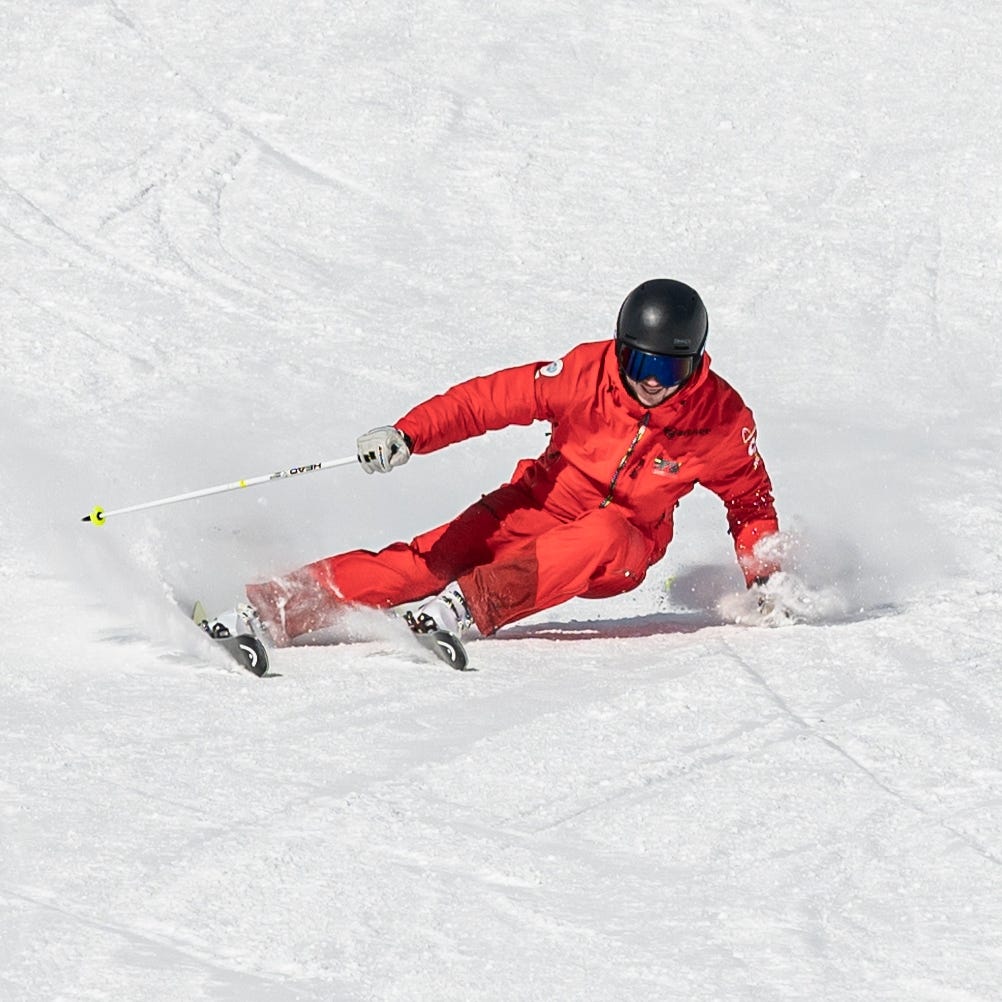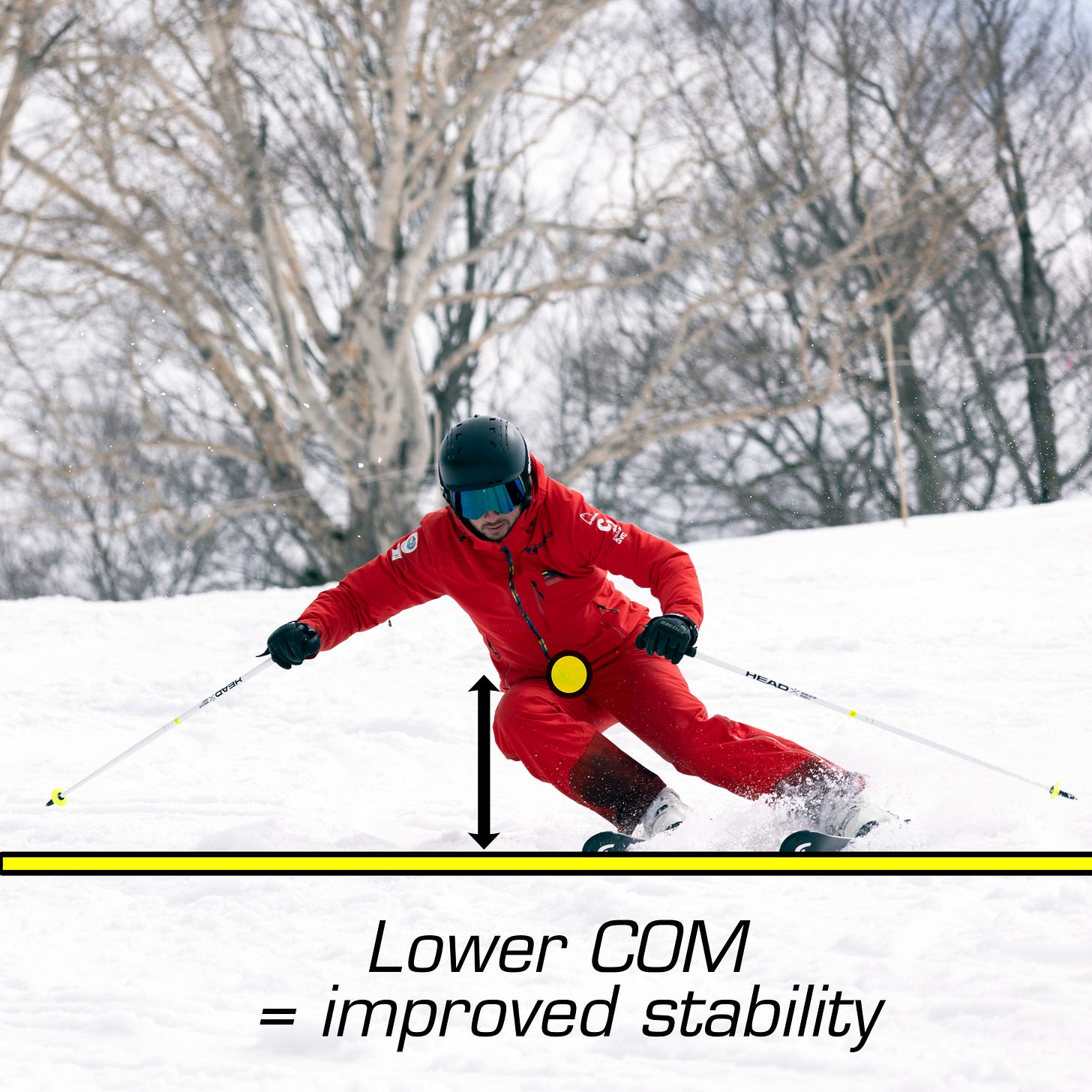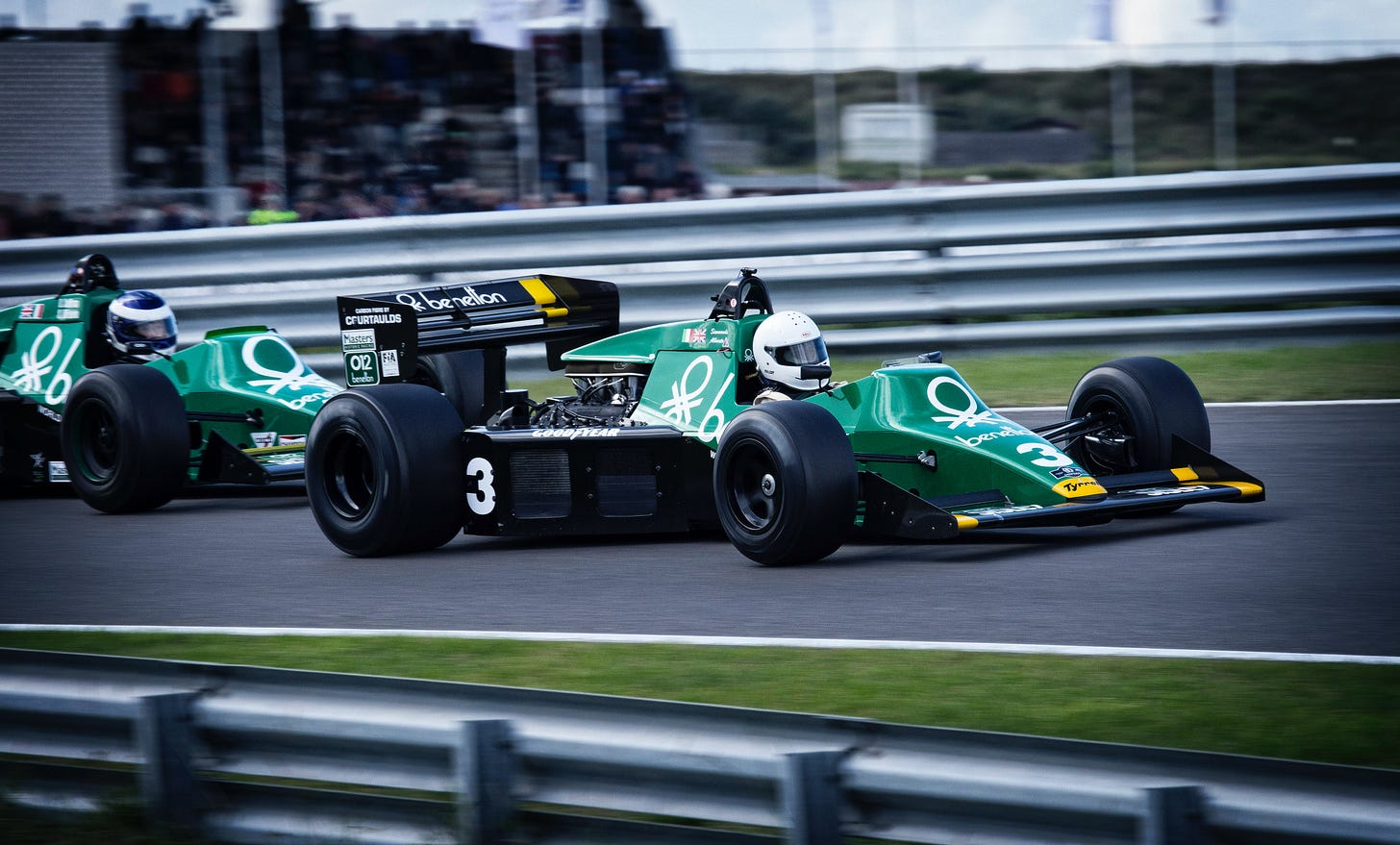The Formula 1 effect: why it's much better to ski with a lower centre of mass
How low can you go?
When I was still a toddler, there were times when I became a bit obsessed with certain toys. After my toy dinosaur-phase (this never really passed TBH, I’m still crazy about dinosaurs), I became very much fascinated with miniature Formula 1 cars as a little kid. 🏎️
Hours flew by as I staged these spectacular imaginary races on my parents’ carpet, slamming my little toy cars into each other while screaming little cries of joy. In my vivid imagination, I was a brave Formula One pilot, driving around like a madman and thriving on speed. 😎
What if I told you there are parallels to be drawn between a strong skier and a Formula 1 race car?
A Formula 1 race car is built low, the car sticks to the track, so to speak, which drastically improves speed and stability.
In skiing, again, a low centre of mass benefits your aerodynamic speed and stability.
Let's discuss maximizing stability today by effectively using your body's centre of mass.
What is your body's centre of mass (COM)? Simply put, it is the central, average point of your body mass.
If you were to throw a ball into the air, its centre is always located perfectly in the middle. For a skier, the body's COM is usually located right above the pelvis. The easiest way to visualize this for yourself is to think of the area surrounding your belly button.
Children have a higher positioned COM than adults because, well…they have a much larger head. This is a great example of how the position of your COM changes according to mass distribution.
The forces acting on a skier (centrifugal, centripetal and gravity) always have a combined effect on a skier's COM. You can displace this point, for example, through progressive inclination and angulation movements.
By moving this point, you can also control how much weight you allocate to your inside or outside ski, or even to the front or back of your skis. Being able to play with shifting this point, therefore, improves your dynamic balance, a skill that any serious Alpine skier or ski instructor should be developing to the best of their ability.
The lower the COM, the more stable the skier. The higher the COM, the more likely the skier can tip over and crash.
Think back to Formula One cars. Race cars are built with a very low COM, so they can take a turn at maximum speed without falling over. The centre of mass on these vehicles should always be below the pivot point of the chassis. The lower it is, the more side load you effectively need to overturn the Formula 1 car.
By systematically maintaining a low COM throughout the entire movement sequence of a turn, you can dramatically increase your overall stability as a skier.
Lower your COM for increased stability.
To take maximum advantage of this, you need to effectively work on keeping your COM low at both the edge change and shaping phase during your turns:
Edge change with a low COM: both legs are flattened during your edge change at the knee joint level, allowing the body's COM to remain low.
Compact shaping phase: flex the inside leg, lengthen the outside leg. This develops a large edge angle, inclination and angulation, and as a result, you can keep your COM again very low. Flex the outside leg that becomes your new inside leg while preparing to initiate a new transition, and keep the COM as low as possible here as well.
Especially when carve skiing, keeping your COM low produces an exhilarating sensation.
So, what are you waiting for? Transform into a race car the next time you're on skis!
Keep it low and steady. 🔥







